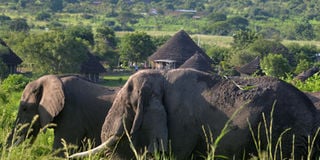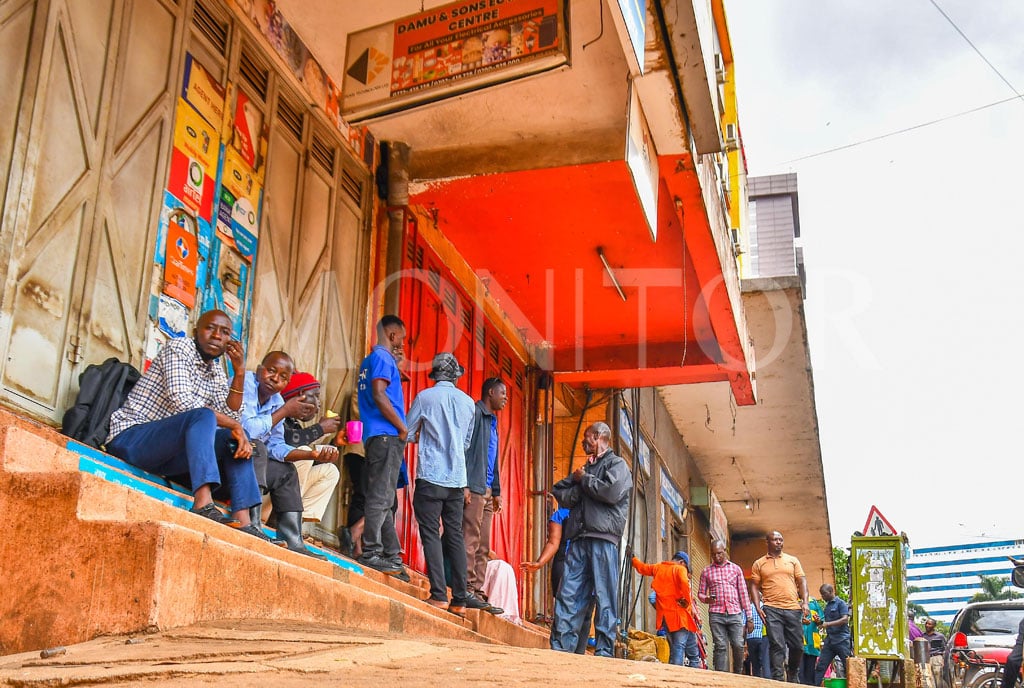Savour the Acholi cultural heritage as you gaze at wildlife

What you need to know:
HARMONY: Get off the beaten path, retrace your footsteps in the wild as you enjoy Acholi culture and marvel at the wildlife as Matthias Mugisha explored at Heritage Safari Lodge in Pakwach.
The sparks from the campfire diverge upwards like tiny stars and dissolve into the night.
The gentle crackling sound from the fire is drowned by the sound of drums from a troupe performing Bwola (Acholi royal dance) on a lit up stage, a few metres away.
“Everything here is based on the Acholi culture and heritage. Knowledge and values are passed on from one generation to the next around the campfire,” William Lalobo, the proprietor of Heritage Safari Lodge, standing next to me explains.
It is not hard to see what he had in mind when he designed the lodge whose concept is based on the Acholi heritage based of the historical and cultural location of the facility.
Cultural heritage
In keeping up with the Acholi tradition, a campfire known as wangoo in Luo is always live at Heritage, where traditional meals are served as dancers entertain guests.
It is not surprising that more than half of the waiters and waitresses are dancers. Even the raw food is stored in traditional granaries.
As Lalobo passes on knowledge to me, I soon understand the origin of the name Heritage Safari Lodge.
It is built in history. It flows with the blood of nature and is covered in a skin of tradition. It is the genesis of heritage and the heart of the Luo as the Vatican is to Roman Catholics.
The lodge, a mine of history and the last outpost, fights for the survival of tradition against modernity.
Architectural significance
The lodge is designed like traditional Luo homestead and revolves around legends of the old and Uganda’s history.
The architecture is molded in traditional huts thatched in steps with perimeter poles supporting the roof.
This creates gaps between the roofs and walls so that termites do not reach the roof. The walls have a black loam soil cladding finish.
The hotel has open gates to bandas. In Acholi culture, it is known as Wang Kac. Lalobo says you must be pure at heart to pass through the gate. Once inside, the responsibility of your safety and care relies on the host.
“Even if you are a fugitive, the host must protect you and if you are harmed, the clan must pay reparations,” he explains.
Hospitality
Instead of welcoming you with a glass of water, visitors are given tamarind juice, which according to records, was Sir Samuel Baker’s drink of choice.
The story behind the concept and design of the facility is the scattering of the Luo across East and Central Africa that started around the area centuries ago because of an elephant.
It also seems likely that Uganda was colonised partly because of elephants.
The elephant and the Luo
The lodge is located within the north- south elephant corridor in Pakwach, on the eastern bank of River Nile near the legendary Wang Lei Cultural Site. The north – south corridor was used by elephants as a migration route along River Nile. The elephants are still present and they thrill visitors when they come near the lodge.
After the animals opened the route, the Luo used it to migrate from the north, through Sudan to Uganda and beyond.
It is at Wang Lei that the forefathers of the Luo nation - Gipir and Labongo separated because of a misunderstanding originating from an elephant.
Once upon a time, a clan head called Olum father to Labongo and Gipir grew too old. He was settled in a beautiful, fertile and lush land bisected by the River Nile that brought life.
The land teemed with animals and birds. While on his death bed, he summoned his elder son Labongo and gave him a special decorated spear which symbolised leadership in the clan.
Olum died a few days later and Labongo took over leadership.
One day when Labongo was out hunting, an elephant raided the village. His younger brother Gipir used his symbolic spear to spear the elephant. The injured elephant ran away with the spear stuck into its back side.
When Labongo came, he asked for his spear which forced Gipir to go in the jungle to track the injured elephant. Gipir searched for days and months in vain until he got sick. He was saved by an old woman who gave him herbs. Years later, Gipir found the spear stuck in elephant skeleton.
The old woman gave him special beads before he left. Labongo’s favourite last born daughter accidentally swallowed one of the beads.
Gipir wanted it back and Labongo had to cut his two-year-old girl to retrieve the bead. The little girl died. After that, the two brothers decided to part ways. They buried an axe at Wang Lei on the shores of River Nile and parted ways.
But according to Lalobo, legend has it that the axe was thrown into River Nile and the water separated allowing Gipir to move westward.
Gipir and his family took the area west of River Nile and became the Alur in northern Uganda, parts of Sudan and eastern DR Congo. Labongo and his family went to the area east of River Nile.
His descendants are the present day Acholis, Japadholas, Langi, Alur and the Luos of Kenya and Tanzania. The third brother, Kamarach is said to have crossed the Nile at Wangjok also known as the top of Murchison Falls to start the Bunyoro Kitara Kingdom.
Elephants and colonialists
Baker Trail: In 1864, an adventurer, and explorer named Sir Samuel Baker came through the footsteps of elephants and the Luo, saw the falls at Wangjok and named them Murchison Falls after the then president of the National Geographic Society.
Today, Heritage Safari Lodge, which teaches visitors this history, is part of the 357-mile-long Baker Trail. In its compound stands a tree that was plated by Chris Baker, a grandson to Samuel Baker.
The trail, also known as the Sir Samuel and Lady Florence Baker Trail, starts at Gondokoro in Juba South Sudan stretching to Murchison Falls. Florence was Baker’s wife whom he freed as a slave at an auction in Bulgaria.
On the Ugandan side which is safe, the trail is considered one of the best in the world with some historical markers like Fort Patiko near Gulu and at the top of Murchison Falls.




